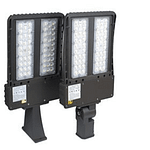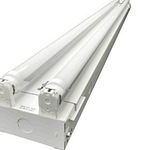There are so many tips and tricks to help make buying and installing LED lights easy. Yet, what do you do with your old fluorescent tubes? Many hospitals, offices and schools are swapping out fluorescent tubes for LED linear lamps. Discarding fluorescent tubes correctly is important, as they are made of glass and can contain mercury. Today, we’re going to walk you through the steps of how to recycle your fluorescent tubes after an LED installation.
Step 1: Keep old tubes in a ventilated area
After you have taken down your old fluorescent tubes, it is important to keep them in a well ventilated area, in case they break. Fluorescent tubes contain small amounts of mercury and should be handled with care when being handled.
Step 2: Prepare a “just in case” kit
In the event that a tube breaks while being removed, you’ll want to have some supplies on hand. Put aside a face mask, rubber gloves, wet paper towels and a broom to pick up and remove broken glass. One thing you MUST NOT DO when cleaning up broken glass is vacuum it up! This can create airborne glass particles, which is dangerous.
Step 3: Find a fluorescent recycling center
As fluorescent lights are slightly different than glass bottles, they require their own recycling facilities. To find one closest to your area, you can visit the Earth911 site. Once you pull up the site, you type in the type of bulb you would like to recycle as well as your location. This site can be used for recycling CFL’s as well!
Step 4: Pack up your bulbs carefully
Once you have found a designated fluorescent recycle center, make sure to box up your lights and handle them with care. Don’t just throw them in the bed of your truck and hope for the best.
Start the LED Process with Sitler’s!
While recycling fluorescent tubes may seem taxing, it is a lot easier than it sounds. By installing LED lights and taking the time to recycle the old fluorescent tubes, you’ll be helping the environment (and your energy bill)! Get started today with a call to Sitler’s at (319)-519-0039 or send us an email!
Posted in LED Lighting Basics, LED Products and Innovations, Uncategorized















